The Van Gogh Bridge in Arles
Cultural and historical site
15 min
ruin
Arles and St. Rémy are where Vincent Van Gogh worked in Provence. Sometimes the original models of painted objects are not in romantic surroundings, both then and now. This is also the case with the Van Gogh Bridge in the south of the new district of Barriol.
No reproduction is permitted without the written consent of the author. (id5757)
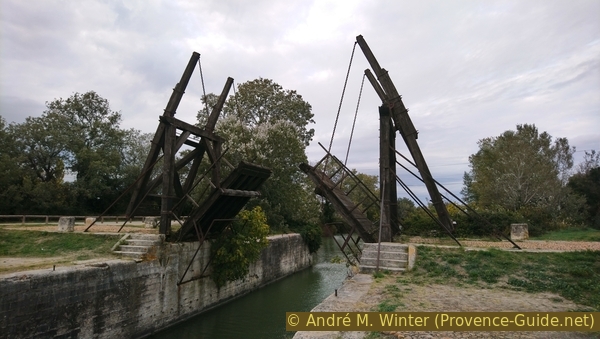
Pont Van-Gogh
Site history
In 1888, this type of double drawbridge was quite common. There were 11 identical bridges along the Arles to Bouc canal. The bridge that exists today is not the original, it was demolished in 1926 with the lock house and replaced by a reinforced concrete bridge in 1930, it is the predecessor of the Réginelle bridge further north. So the small fixed bridge does not mark the original location.
Almost all of the canal bridges were destroyed by German troops in 1944 during World War II, with the exception of those at Fos-sur-Mer. This last one was dismantled in 1959 for road works. The city of Arles bought it and installed it on the same canal, downstream of the original bridge, in 1962. It is therefore not the bridge painted by the artist, nor is it in its original place.
The bridge was last restored in 1997. The parts are permanently stabilized, so the bridge can no longer be lowered.
The bridge was called Pont de Langlois, this was the name of the officer who guarded it and carried out the lowering or raising of the bridge. Vincent van Gogh misunderstood this name, noting Pont de l'Anglais (Englishman's Bridge) and this name is still used. However, it must be said that Langlois is also a modified form of L'Anglais, in the Middle Ages the ending "ais" was always written "ois".
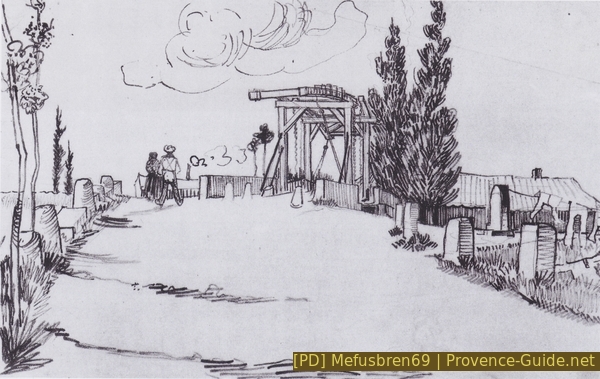
Sketch of the Pont de l'Anglois
Access by public transport
We arrive at Arles station by train from Marseille, Avignon or Nîmes. Exit the train station and turn left, further left again and finally a third left to get onto Avenue de Stalingrad. Go under the railroad and go straight ahead until after the Speedy car shop you can see the Stalingrad bus stop. Take the bus stop on the left side of the street and take the number 6 bus to Barriol. Get off at the Pont Van Gogh stop. Information at Zou! (only french).
There is no precisely materialized southbound stop coming from the train station. Either the bus stops at the opposite bus stop and you then walk about 100 meters in the direction of travel to see the bridge on the left. Or the bus stops right next to the bridge.
Access by car
Driving from Avignon and going around Arles in the east, or coming from the south and Marseille on the N113, we take the Arles Center exit, this is the last exit before crossing the Rhône. Then left three times towards Barriol. We pass the canal from Arles to Bouc right where the Pont de Réginelle was, which replaced the original Pont de Langlois! At the next roundabout on the right, the Van Gogh Bridge is already signposted. Head straight south to exit town and at the next major roundabout, take the last exit. As you approach the canal, you can already see the bridge.
Coming from Nîmes on the same N113 from the west, we leave this road just after crossing the Rhône and now we follow the signs towards Barriol until we find a sign for the Van Gogh Bridge. Now head straight south to exit the city and at the next major roundabout take the last exit. As you approach the canal, you can already see the bridge.
Parking site
Either park on the left at the few places, or cross the newer bridge on the right and then park on the meadow on the right.
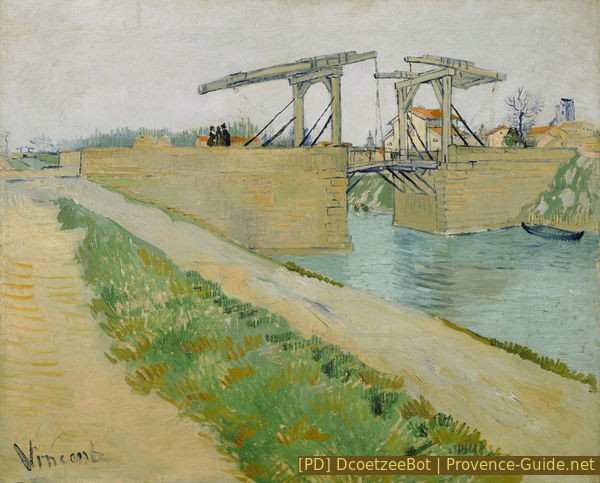
Langlois Bridge at Arles with towpath alongside the canal
Description
Vincent Van Gogh made the sketches and the final paintings of various views of the bridge between March and May 1888.
In his letters he complained about the bad weather that prevented him from capturing the colors of Provence. This can be seen on the versions shown on this page. It also fits the photos we were able to take here on a rather gloomy October day.

Langlois Bridge at Arles with women washing
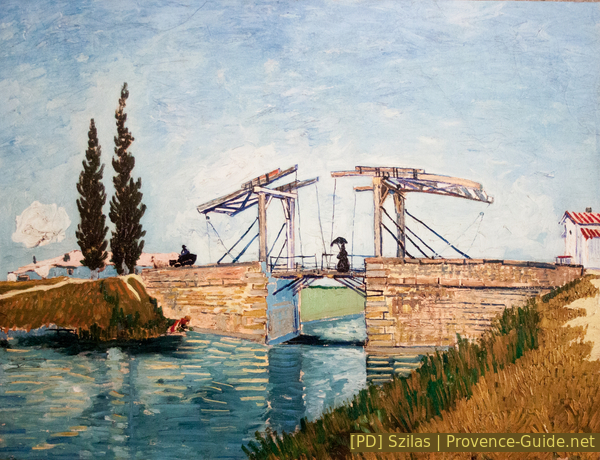
Langlois Bridge with woman with parasol
No reproduction is permitted without the written consent of the author. (id5756)
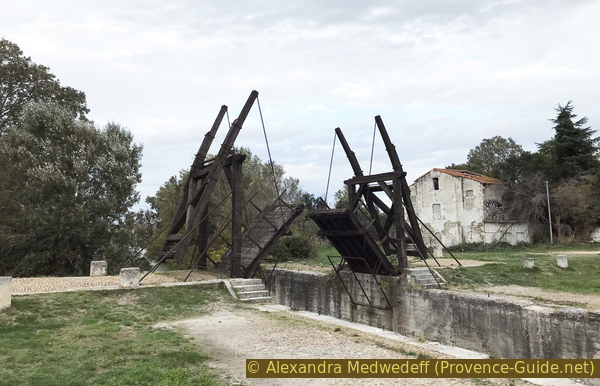
The Bridge of Langlois at Arles